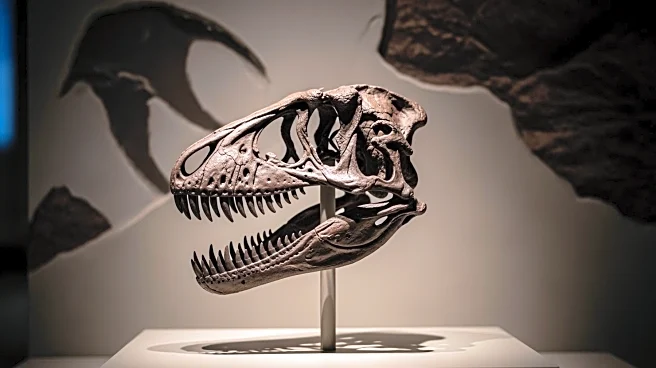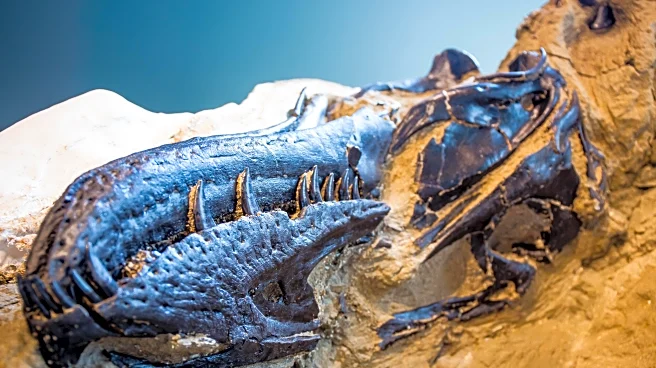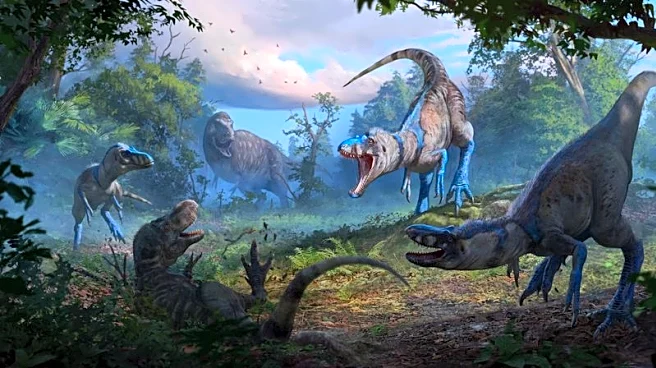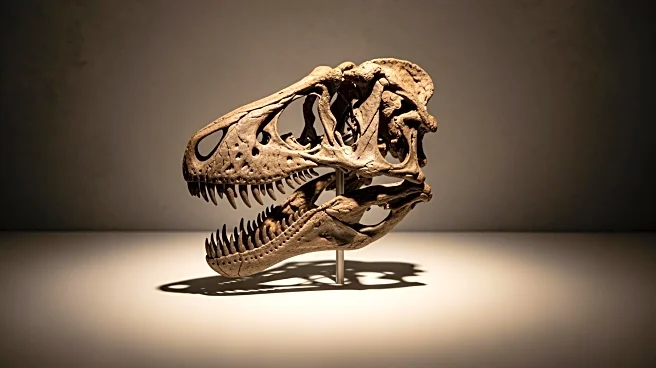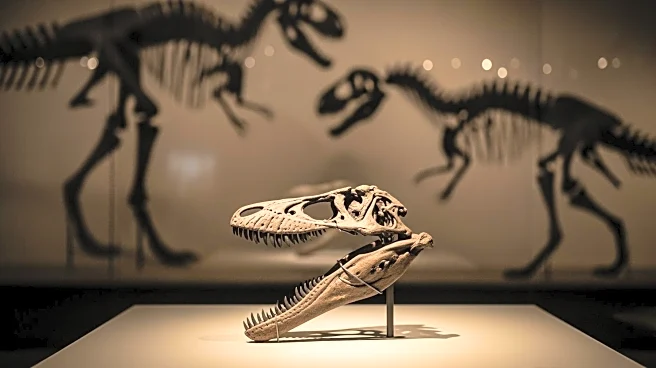What's Happening?
Recent paleontological research has confirmed that Nanotyrannus, a smaller and more agile dinosaur, was not a juvenile Tyrannosaurus rex but a distinct species. This conclusion was drawn from the analysis of a remarkably complete tyrannosaur skeleton
found in Montana, known as the 'Dueling Dinosaurs' discovery. The study, co-authored by Lindsay Zanno from North Carolina State University, utilized bone growth rings and anatomical features to establish that the specimen was an adult Nanotyrannus lancensis. This finding challenges previous assumptions that Nanotyrannus fossils were merely juvenile T. rex specimens, suggesting a more diverse predator ecosystem during the late Cretaceous period.
Why It's Important?
The confirmation of Nanotyrannus as a separate species reshapes the understanding of dinosaur biodiversity and predator dynamics during the late Cretaceous period. This discovery implies that multiple tyrannosaur species coexisted, potentially competing for resources. It also highlights the complexity of dinosaur ecosystems, which were previously thought to be dominated by T. rex. The study's findings could lead to a reevaluation of other dinosaur fossils and classifications, impacting the broader field of paleontology and our understanding of prehistoric life.
What's Next?
The recognition of Nanotyrannus as a distinct species may prompt further research into other misclassified dinosaur fossils, potentially uncovering additional species. Paleontologists may revisit existing collections to reassess specimens previously attributed to T. rex. This could lead to new discoveries about the diversity and evolution of dinosaurs, as well as their ecological interactions. The study also opens up new avenues for exploring the evolutionary pathways of tyrannosaurs and their adaptation strategies in a competitive environment.
Beyond the Headlines
The study raises questions about the methods used in paleontology to classify species and the potential for misclassification in the fossil record. It underscores the importance of detailed anatomical analysis and the use of modern techniques to accurately identify species. This research also highlights the dynamic nature of scientific understanding, where new evidence can significantly alter long-held beliefs. The findings may influence future paleontological expeditions and the search for more complete fossil records to further elucidate the history of life on Earth.
